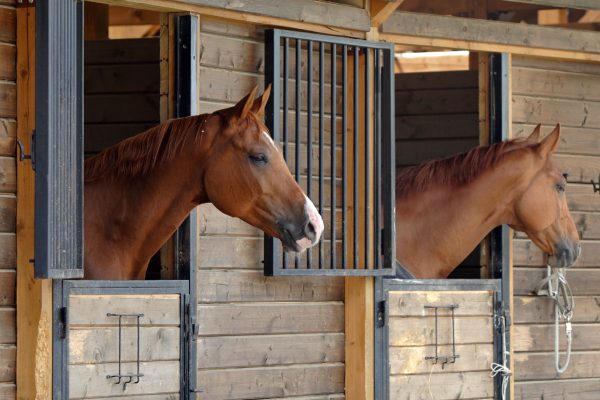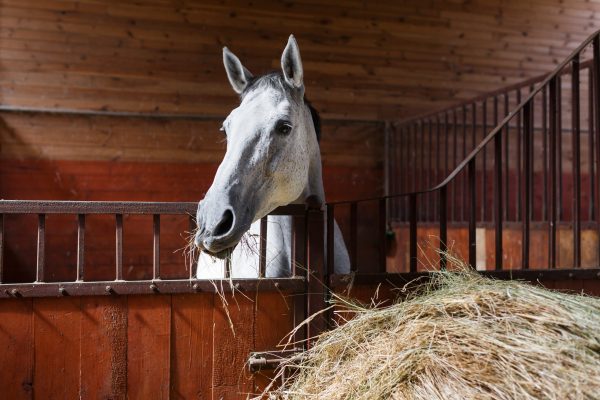Welcome to the great winter debate: do horses really need heated barns when the snow starts to fall and the temperatures plummet? It’s a question that stirs up discussions among horse owners everywhere as they strive to provide the best care for their beloved equines during the chilly months. While visions of cosy, warm stables dance in our heads, let’s saddle up and explore the truth behind whether our four-legged friends truly need heated accommodations to weather the winter chill.
Generally speaking, horses do not require heated barns in winter, as they are well-adapted to withstand cold temperatures. Their thick winter coats provide natural insulation, helping them to regulate their body temperature and stay warm in wintry weather. Additionally, horses can increase their metabolic rate and generate heat through digestion and muscle movement.
The need for additional heating in a horse barn depends on a range of factors, including the individual horse’s health, age, breed, and the specific climate conditions. However, as a general guideline, most healthy adult horses can tolerate temperatures below freezing without requiring supplemental heating.
Horses are usually comfortable in temperatures ranging from about 45°F to 75°F (7°C to 24°C). As temperatures drop below freezing (32°F or 0°C), horses may start to feel chilly, especially if they are wet or exposed to wind. In such conditions, providing adequate shelter from wind and moisture, along with plenty of forage to help generate body heat through digestion, is usually sufficient to keep them warm.
If temperatures consistently drop below freezing and remain there for extended periods or if extreme cold weather conditions such as fierce winds or heavy rain are present, then additional heating may be warranted to provide extra comfort and protection. In such cases, heated water buckets or troughs to prevent water from freezing and insulated blankets or horse rugs can also help keep horses warm.
Should I Use A Heater To Warm A Horse Barn?
While it’s possible to heat a horse stable with an electric heater, there are several important considerations to keep in mind as heating a barn with a heater can pose certain risks and drawbacks. Firstly, horses may become dependent on artificial heat and struggle to acclimate to colder temperatures, making them more susceptible to temperature changes when they are outside the heated environment.
Excessive heat can cause horses to sweat, potentially leading to dehydration and other health issues. Monitor your horse’s behaviour and body condition and consult a vet to help determine if additional heating is necessary and at what temperature it should be provided.
On top of that, heating systems can create fire hazards if not installed and maintained properly, posing a risk to both horses and humans.
However, there are some situations where providing supplemental heat may be beneficial, such as for foaling mares or horses with certain health conditions that make them more sensitive to cold temperatures. In these cases, it’s essential to consult with a vet and implement safe heating solutions that do not pose risks to the horses or the barn.
What Is The Best Way To Warm Up A Horse Barn Without Using A Heater?
If you’re keen to cosy up that horse barn without cranking up the thermostat! You’ll need to embrace clever and eco-friendly ways to keep our equine pals warm and toasty. Here are some tried-and-true methods to keep the chill at bay while creating a snug equine sanctuary:
- Proper insulation: Ensure the barn is well-insulated to retain heat. Insulate walls, ceilings, and doors to prevent heat loss and create a more comfortable environment for the horses.
- Strategic ventilation: While insulation is important, so is ventilation. Proper ventilation helps prevent moisture buildup and maintains air quality. Install vents or windows that can be opened to allow fresh air to circulate while keeping drafts to a minimum.
- Passive solar heating: Take advantage of natural sunlight to warm up the barn during the day. If possible, position the barn to maximise exposure to the sun, and use windows or skylights to allow sunlight to enter and heat up the space.
- Use of bedding: Provide ample bedding, such as straw or shavings, on the stall floors to insulate against the cold ground. Deep bedding can provide additional warmth and comfort for the horses.
- Windbreaks: Block cold drafts by installing windbreaks around the barn, such as trees, shrubs, or solid walls. This helps reduce heat loss and creates a more sheltered environment for the horses.
- Blanketing: Use appropriate horse blankets or rugs to help keep the horses warm, especially during colder nights. Ensure the blankets are properly fitted and in good condition to provide maximum insulation.
- Feeding: Increase the horses’ hay intake during colder weather. The process of digesting hay generates heat, helping to keep the horses warm from the inside out. Provide access to fresh water at all times, as staying hydrated is essential for maintaining body temperature.
Providing adequate shelter from wind, rain, and snow, along with access to fresh water, ample forage, and appropriate blankets when needed, is sufficient to keep horses warm enough in cold weather. By implementing these strategies, you can effectively warm up a horse barn without relying on heaters, creating a comfortable environment for your equine companions right up until the daffodils start to appear.
For further tips on how to keep your horse warm in winter, click here.

Get in touch
Want to know more about choosing low-cost, high-quality stables? We’re happy to answer all your questions. Call 01233 740944, email info@nationalstables.co.uk or send us a message and we will respond ASAP.







